As we move into this new Gregorian year I’m feeling hopeful, grateful, and rested after an intense final sprint in 2023.
Praying for peace, health, and joy for you and your loved ones amidst a heartbreaking time on the planet.
I feel excited to share the results of The Great Chestnut Experiment with you.
This update was written by my partner in this project Will Canine who is a visionary entrepreneur and investor. He’s been by my side throughout the journey and I feel deep gratitude and pride for what we have created so far and the vision we are stewarding together.
This is a pretty business-y update if you’re into that and I’ll write up a bit more about my experience and visions for the future soon…
Now for the update….
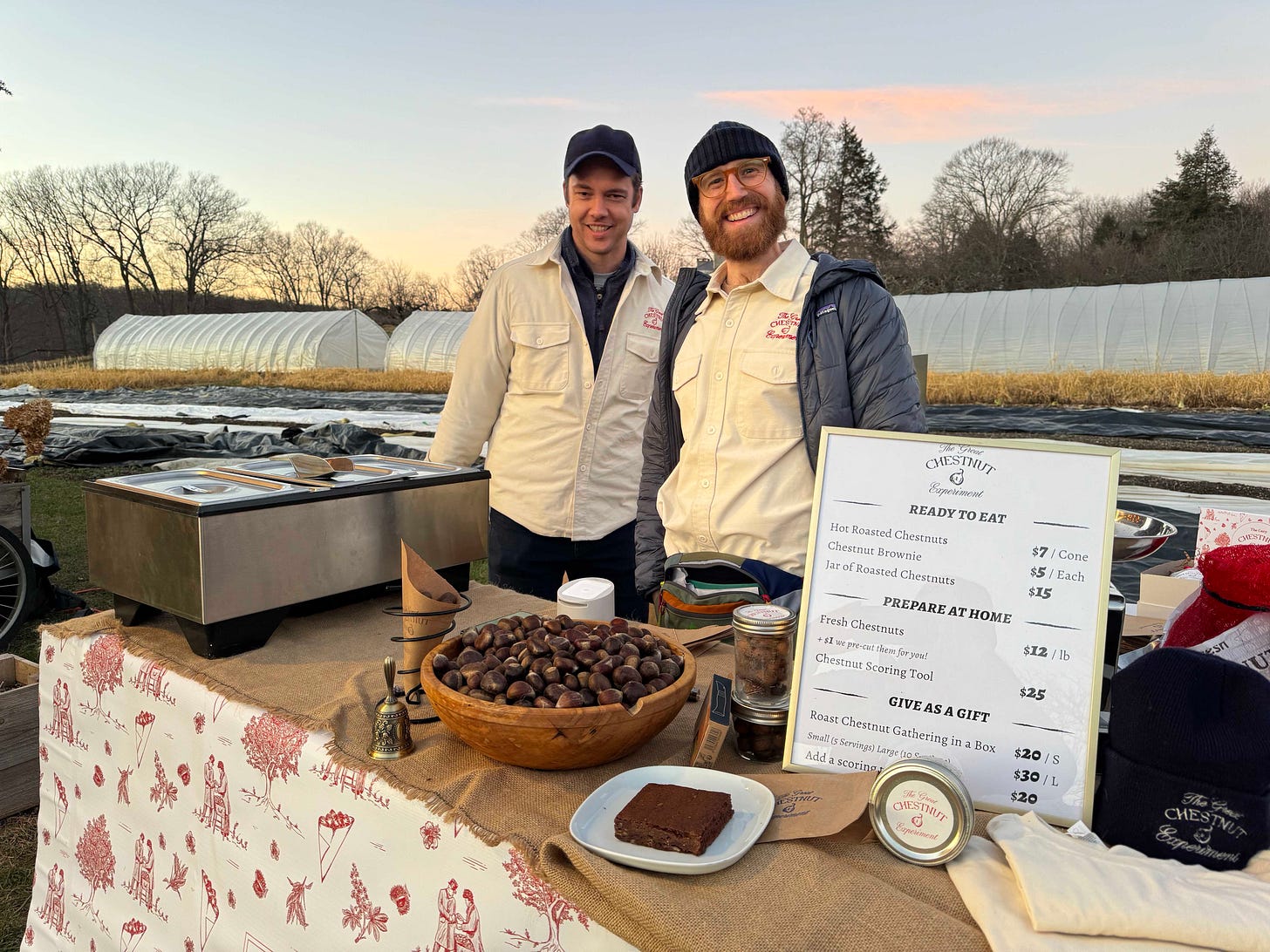
Our goal is to grow the American market for chestnuts, re-weaving this native superfood into our culture, cuisine, agriculture, and economics. The bigger the market for chestnuts, the more farmers will plant chestnut trees, re-introducing a functionally extinct tree back into its eco-region, supporting native biodiversity, pulling carbon out of the atmosphere, and producing a healthy and delicious carbohydrate staple crop.
This year was about learning, testing, prototyping; in a word, it was an “experiment.” What do New York City market goers already think about chestnuts? Do they want to buy a cone of roast chestnuts for $7? Do they like our chestnut brownie and chest-nog? What about a chestnut experience gift box? What markets and operational models are profitable for us, and what contexts should we avoid? And what should we do to sell 5x - 10x more chestnuts next year?
Results: People Love Roast Chestnuts!
We received overwhelmingly positive feedback on our most popular product by far: a cone of roast chestnuts. We had many repeat customers even in our single day pop-up locations. Over our 10 market days, we sold 763 roast cones total, at approximately a 70% gross margin.
We perfected our roasting recipe with a chef friend — thank you Janine! — and you can find it here (link to recipe). One thing we learned very well is the importance of very well scored (sliced) nuts for ease of peeling and eating. The Italian scoring machine we got was crucial to our ability to move fast enough to be viable from a labor perspective — a person cutting each chestnut by hand would not have been physically or economically possible even at our experimental scale. But the machine we had this year was for larger Italian chestnuts, and 15 - 20% the medium sized nuts we bought sometimes didn’t get effectively scored, even after going through 2x (we can fix this next year with some adjustments + upgrades to the machine we use).
But most of the roast chestnuts were amazing, even self-styled aficionados loved the nuts we got from Route 9 Cooperative for their freshness, sweet chestnut-y taste, and super easy peeling.
We had a bell that anyone having their first ever lifetime chestnut would ring — it was ~15% of our 908 customers, and it was a blast to give people their first chestnut. It usually ended up with them buying a cone! Especially after they’d heard the story of the extinction and reintroduction of chestnuts in America.
Everyone, from those that had only heard of chestnuts from the song, to those that had been eating them every year since they were a child, made the association of chestnuts being a holiday special food. We heard a lot of variations of “chestnuts, so festive!” and the holiday markets were very happy to have our beautiful booth in a prominent location.
Results: The Right Holiday Markets are Profitable!
Like many food ventures, the key to profitability is sales volume. We need to sell enough of our nuts per hour to break even on the overhead of showing up to the holiday market to begin with. There are obviously two components of this: market context, and operational model.
Operations (Costs)
This was a year of “do things that don’t scale” to validate markets. That said, we did find an operating model that worked, and that we’ll refine and make much more efficient next year. We had to show up with all our gear (oven, warmer, tables, tent, signs, scorer, etc) and products (chestnuts, brownies, nog, gift boxes, scorers, shirts) in a U-Haul van, and run it on a rented generator. Sasha and Will were at all 11 events, and we also had George and Peach helping out on different days (thanks ya’ll!). All in, our average cost to show up at a market was $900. This can be reduced 20-30% next year with more efficient kitchen prep and equipment strategy.
Markets (Revenue)
We tested many different contexts for our booth, 7 different markets over 11 days. Overall, we had 3 profitable days, once in a farmers market in Hastings and twice at the Fort Green holiday craft market. Our best day was $2,000 at the Fort Green Craft Market, and our best hour was at the Fort Greene Christmas Tree Lighting Ceremony, when we did $545 in 1 hour.
This achieved our goal of understanding what contexts work well for our product. High attendance holiday events were the stand-out profile. With more time to prepare and budget to invest, we can position ourselves at far better markets next year than even the very best of this year, and we now know exactly what we are looking for.
Value Added Products
In addition to high enough sales volume of our hero product (roast chestnut cones), it helped us a lot to have products that customers would buy in addition to the cone, increasing the average transaction value — or drawing in a customer that otherwise wouldn’t have purchased anything.
Chestnut Brownie
A delicious fudgy recipe from Claire Saffitz, this was a big hit. It is labor intensive because you have to peel the chestnuts, but we will invest in a machine that makes that easier next year. We are excited to work on sourcing regeneratively grown cacao for these next year as well. We sold 151 brownies total.
Chest-nog
This is a delicious hot chestnut puree + oat milk beverage full of cardamom, cinnamon, and maple syrup. We sold out every time we made it, and think that this will fly off shelves at even greater volume with a little marketing push and pizazz. We also believe there may be a place for this beverage in cafes and beyond long term.
Results: The Cozy Chestnut Club Gift Box is a Winner!
This product got into Eater’s What to Buy list!
What’s in the box?
1lbs or 2lbs of fresh chestnuts packaged in gift bag with bow
Paper cones to hold chestnuts for up to 10 friends
Chestnut history, trivia, and roasting instructions booklet
Optional scoring tool
We sold 144 of these in under 2 weeks with zero paid media, so we decided to take them off the online store since we have been making them with off-the-shelf materials in Sasha’s living room and felt like the point had been proven without tying any more bows ourselves. We are excited to have a whole year ahead to make custom boxes for next year!
The hope for this product was to find a value-added way of sharing roast chestnuts over the Internet. If we can ship you a gift box of fresh chestnuts with instructions and tools for prep and roasting, will you have fun sharing roast chestnuts with your friends and loved ones? We think so!
This product has the potential to scale profitable chestnut sales even bigger and faster than the physical holiday markets because it can leverage the Internet. It’s perfect for affiliate marketing on social media, and corporate holiday gifting, and we’re excited to explore some “plant a tree with this gift box” type offerings with our partner farms next year.
Conclusion + Next Steps
So what does all this amount to? What can we do with all this learning?
We think we can grow the holiday market + giftbox channel from $7,600 total revenue this year to $200k - $300k total revenue next chestnut season (mid-October - Dec 31, 2024). In the 3 - 5 year timeframe, we see this as a staple NYC holiday business doing over $5m in revenue and moving 150k lbs of chestnuts (roughly 20% of today’s domestic chestnut production) every holiday season.
And that is just one city, and one channel of chestnut sales. As consumer awareness and domestic supply grow together, other value added channels will be available for us to grow into. Given the amount of chestnut trees already in the ground, and the accelerating level of private, state, and federal dollars going into planting new agroforestry systems, the supply is set to expand significantly in the next decade and beyond. Becoming the defacto value-added channel for chestnuts — and other agroforestry products — at a society wide scale is our mission.
To that end, we will be raising a seed round this winter! We are eager to take the opportunity to partner with agroforesters and build a food system based on ecological abundance. Please let us know if you’re interested in learning more, or know anyone who invests in regenerative agriculture and food!
Thank you!
Shout-outs and Thank You’s
🏡 Reforester’s Laboratory was our home for the season, letting us do prep and 👩🏻🎨storage. It is an amazing game-changer to have such a mission aligned space in Brooklyn, and Greg is so generous with its use for projects like ours.
👨🏼🍳 Eli, Devon, and Sasha Zabar for being such amazing hosts of our very first week of holiday time chestnut sales.
💪 Adam Berenzweig showed up just to help for at least half of our market days, and we couldn’t have done it without him. Love working with you Adam, can’t wait to grow this together!
👩🏻🎨 Suze Myers crafted a stunning brand identity and brilliant toile aesthetic design for our pop ups lightning quick.
👩🏫 Melanie Kahl and Danny Weng helped us design and execute the roast chestnut gathering in a box from ideation to production in under 10 days.






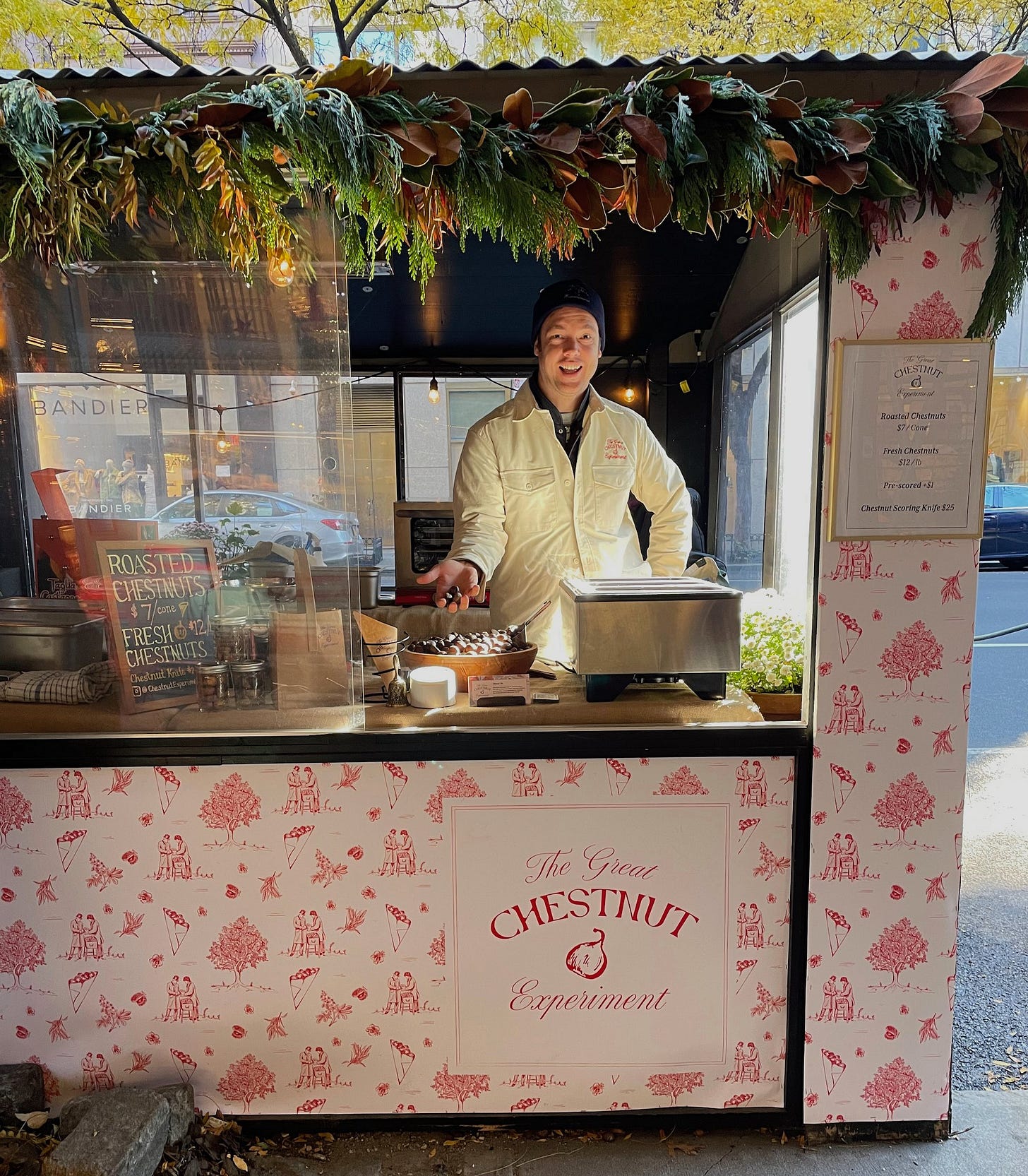
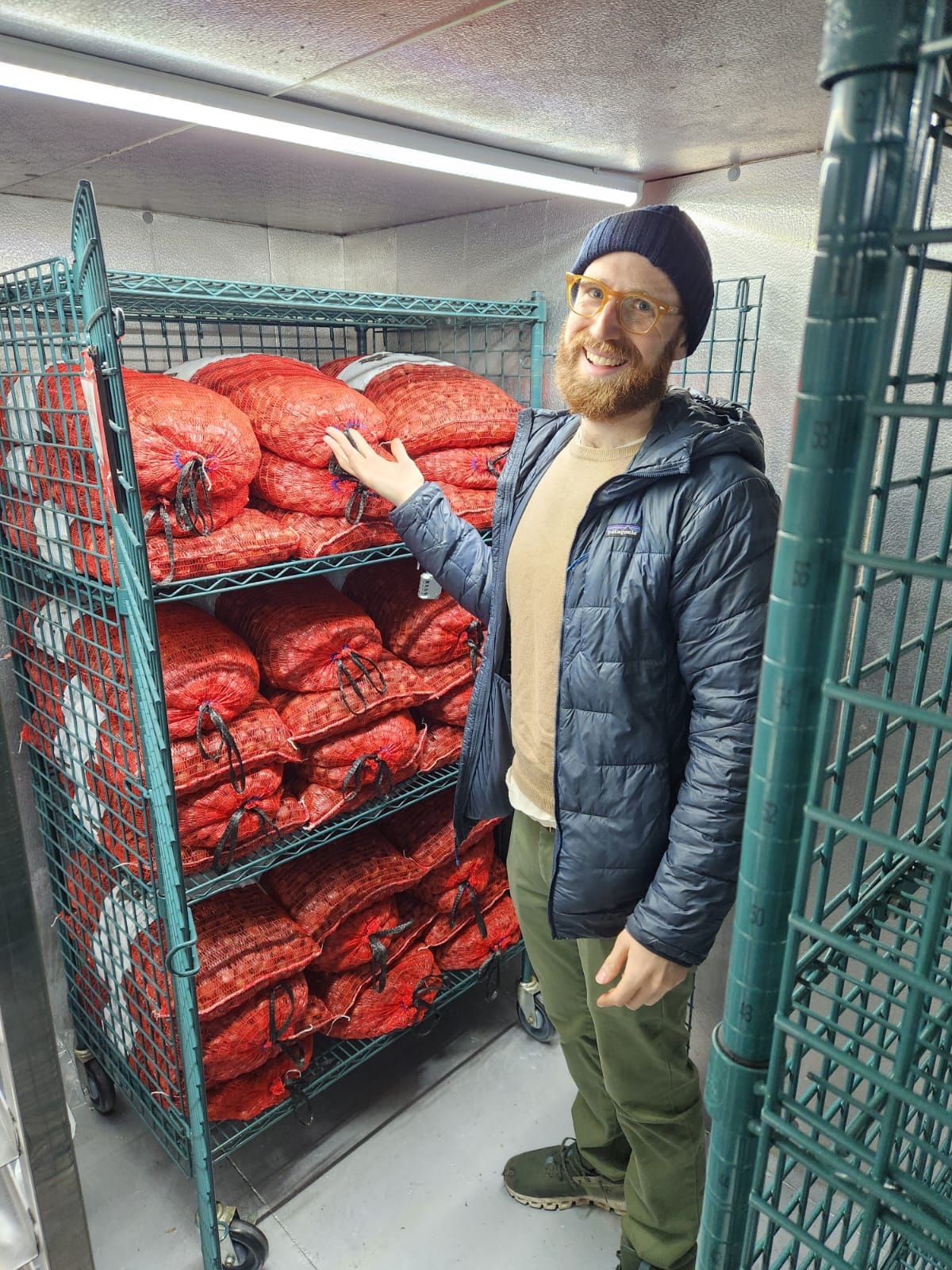
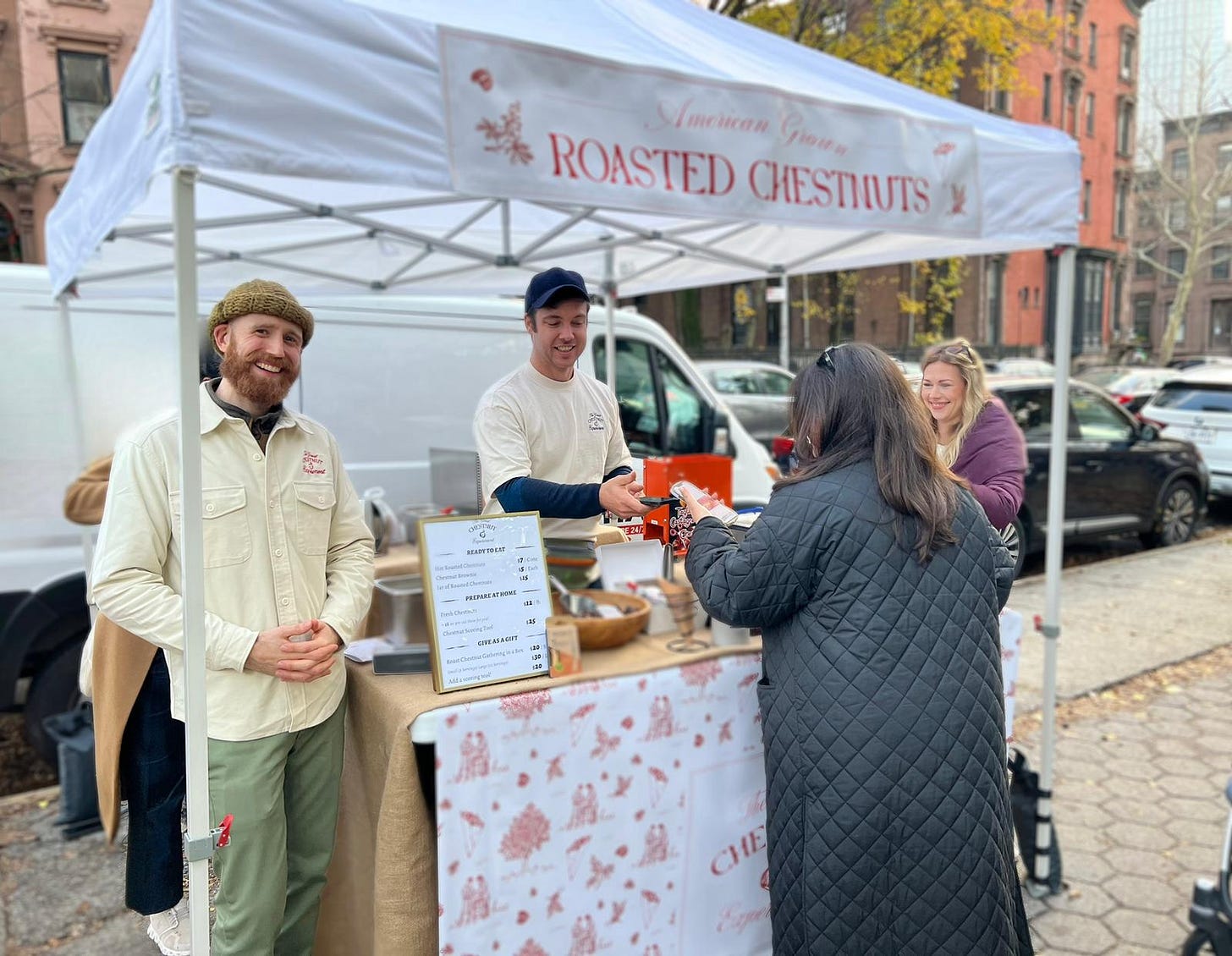

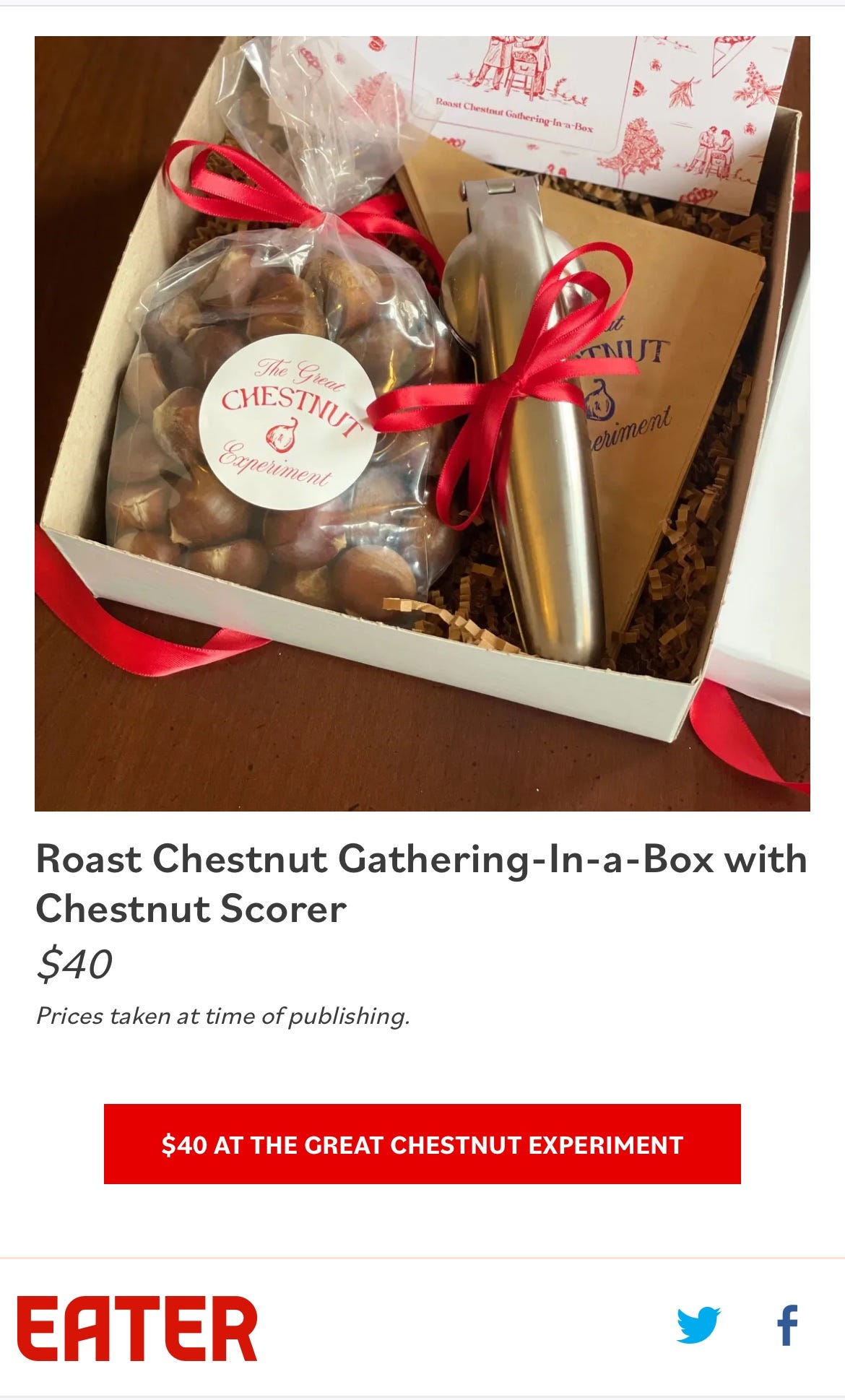
Loved reading this Sasha!
Amazing update Sasha. Inspired to see you take this from zero to one with such momentum, initiative, operational excellence and such a strong mind towards learning how you can iterate. I'm so excited to follow along while you grow this experiment and steer our food systems into the future!